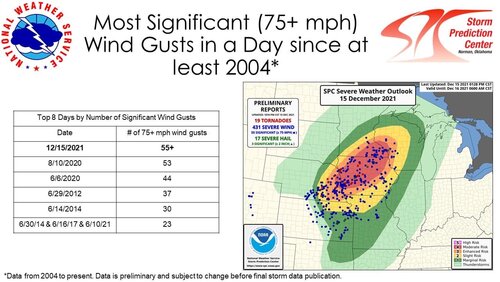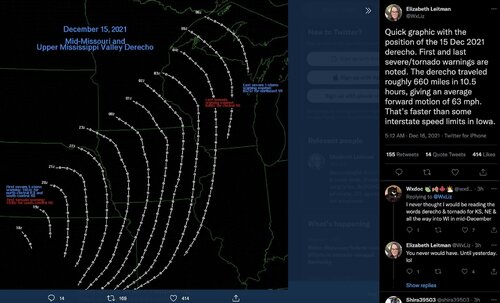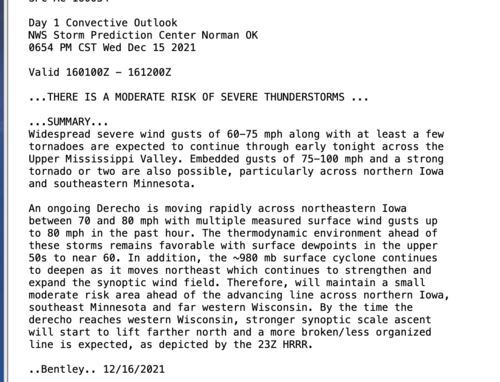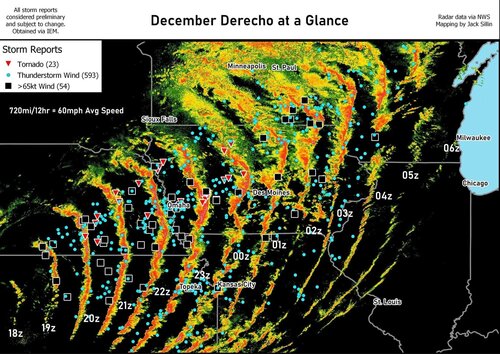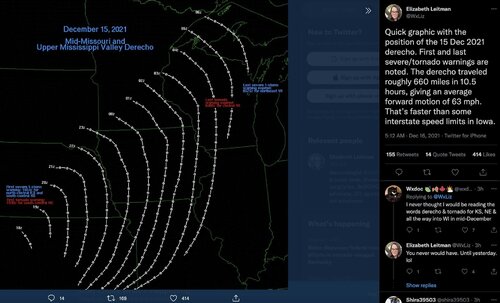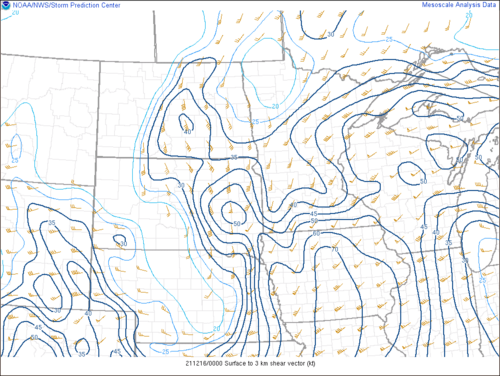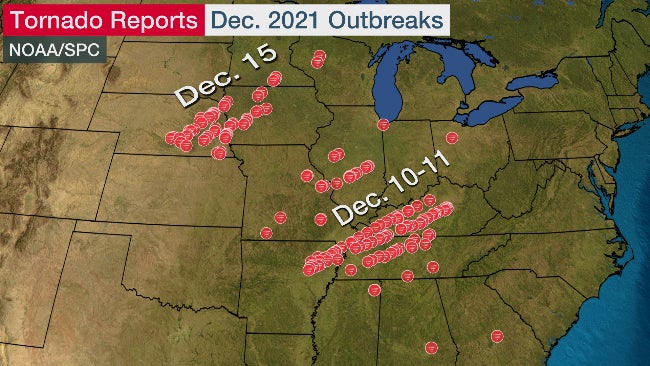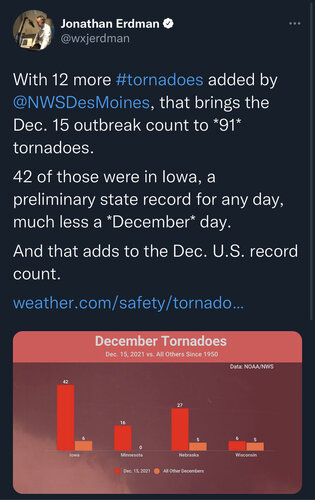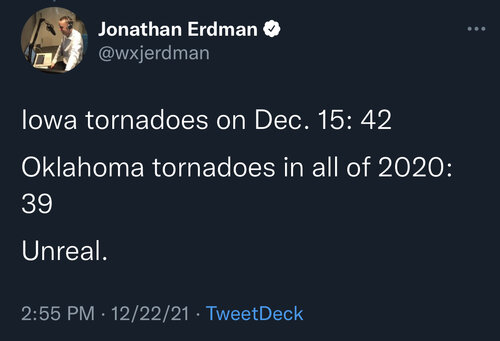I am posting this here because I did not chase this event, and this discussion will be focused more on the aftermath and meteorology rather than on chase logistics.
While most of the weather community has been (understandably) focused on the damage surveys for the tornado outbreak from Friday, December 10th, there was also a significant and historic (read, record breaking) severe weather outbreak (including a ton of tornadoes) across the eastern Plains and upper Midwest on Wednesday, December 15th, which was also fairly well-forecast, and which was also associated with significant non-convective hazardous weather (mostly extreme surface wind gusts and wildfires).
Now that the damage surveys of this event are mostly in, it has dawned on me just how big of an event this was.
First, the total reports:
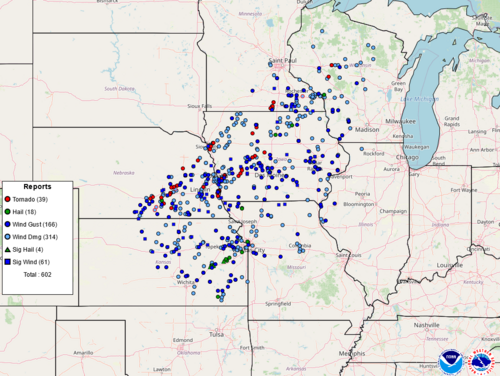
There were ~600 total reports of severe weather from C KS NEwd through C WI, with wind accounting for nearly 90% of the total reports. There were 61 significant wind reports, the peak of which was 93 mph (with a handful of other lower-90s measured gusts) near Lincoln, NE, and a few dozen of 80 or above scattered about. The wind aspect alone likely qualifies this event as a derecho.
And I don't know of a documented derecho in the month of December in the US.
There were also 39 reports of tornadoes. Although, after I combed through the Twitter pages of the various NWS offices, I have found logs for at least 48 separate tornadoes, including (state-by-state):
At least 4 of the tornadoes in Iowa had path lengths of more than 20 miles, and almost all of the Iowa tornado tracks were longer than 10 miles!
A few records were set regarding the tornadoes.
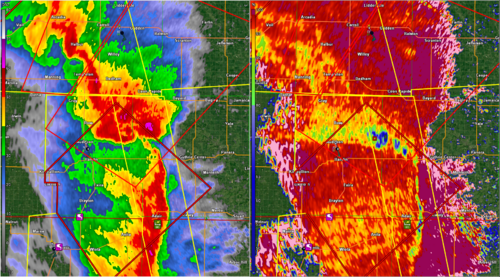
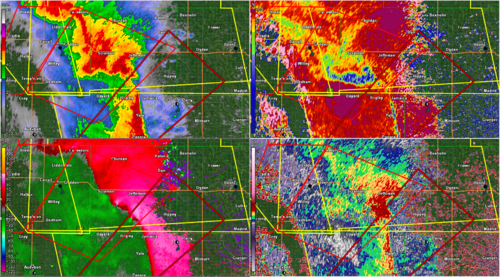
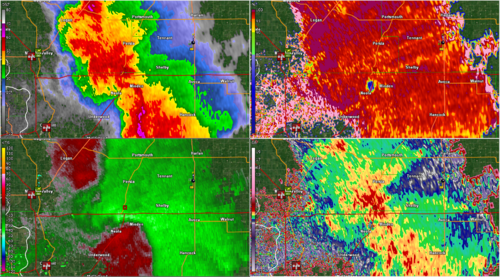
I found it interesting how the tornadoes in IA seemed to be favored along the portion of the QLCS convection that was aligned more NW-SE rather than N-S, as most of the QLCS in Iowa was aligned. The 0-1 km shear and 0-2 km storm-relative flows were ideally aligned in both places, but I would have thought the orthogonality between the front of the line and the shear would have favored more tornadoes to the south and east of where the main corridor was (thinking Des Moines and points south towards the IA/MO border):
0-1-km shear
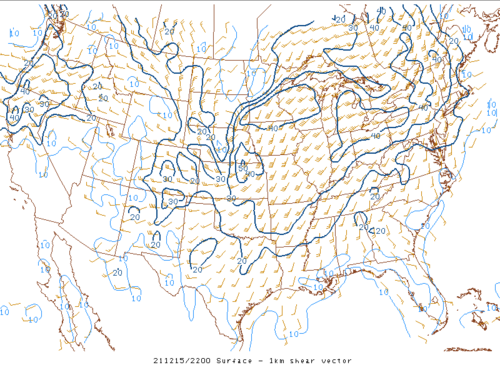
0-2-km storm-relative winds
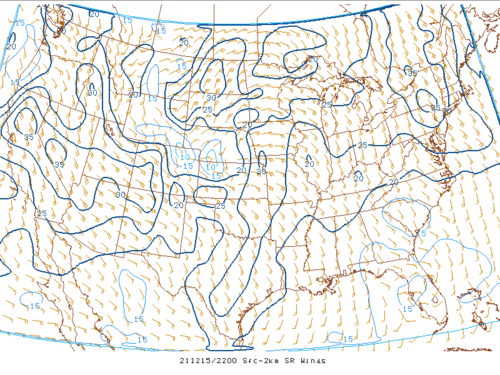
Also amazing was how much real estate was under a warning at some point during the event:
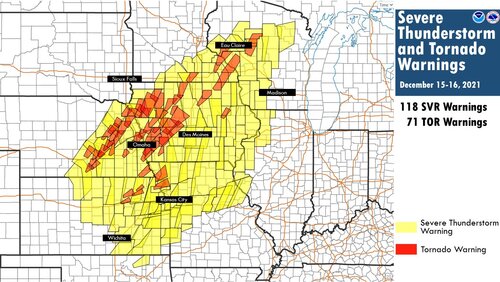
Only Lyon and Osceola Counties in Iowa were not under a warning at some point during the day! That's like 97% of the area of the state!
The severe convective part of this event was nuts, and that was only one aspect to this event. Multiple states (some of the same areas that were also hit by severe weather, go figure) set all-December records for maximum temperature:
There was also some really nasty wind and wildfires behind the convective part of the event. Too much to go into here.
Maximum measured wind gusts during the 24-hour period ending local midnight on 16 December 2021
Note a handful of 100+ readings. There was also a 104-mph gust in New Mexico
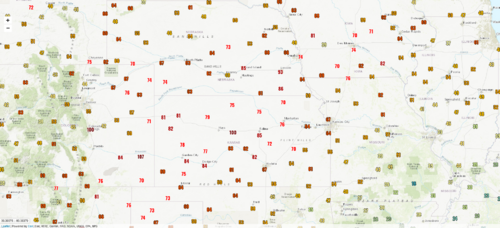
Just an amazing synoptic scale cyclone. One for the textbooks. Note the blowing dust and smoke plumes from the TX/OK PH and northward.
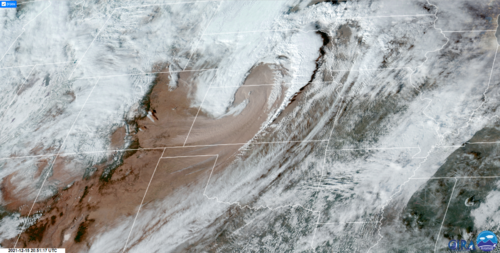
While most of the weather community has been (understandably) focused on the damage surveys for the tornado outbreak from Friday, December 10th, there was also a significant and historic (read, record breaking) severe weather outbreak (including a ton of tornadoes) across the eastern Plains and upper Midwest on Wednesday, December 15th, which was also fairly well-forecast, and which was also associated with significant non-convective hazardous weather (mostly extreme surface wind gusts and wildfires).
Now that the damage surveys of this event are mostly in, it has dawned on me just how big of an event this was.
First, the total reports:

There were ~600 total reports of severe weather from C KS NEwd through C WI, with wind accounting for nearly 90% of the total reports. There were 61 significant wind reports, the peak of which was 93 mph (with a handful of other lower-90s measured gusts) near Lincoln, NE, and a few dozen of 80 or above scattered about. The wind aspect alone likely qualifies this event as a derecho.
And I don't know of a documented derecho in the month of December in the US.
There were also 39 reports of tornadoes. Although, after I combed through the Twitter pages of the various NWS offices, I have found logs for at least 48 separate tornadoes, including (state-by-state):
- NE: 15
- IA: 22
- MN: 7
- WI: 4
- EF2: 21
- EF1: 17
- EF0: 8
- EFU: 3
At least 4 of the tornadoes in Iowa had path lengths of more than 20 miles, and almost all of the Iowa tornado tracks were longer than 10 miles!
A few records were set regarding the tornadoes.
- NWS Chanhassen has confirmed the first December tornado in the state of Minnesota. I haven't checked Wisconsin's records, but I wouldn't be surprised if the Wisconsin tornadoes were a record, too.
- Harold Brooks at NSSL noted many records for most Tornado Warnings in these states for multi-month periods:



I found it interesting how the tornadoes in IA seemed to be favored along the portion of the QLCS convection that was aligned more NW-SE rather than N-S, as most of the QLCS in Iowa was aligned. The 0-1 km shear and 0-2 km storm-relative flows were ideally aligned in both places, but I would have thought the orthogonality between the front of the line and the shear would have favored more tornadoes to the south and east of where the main corridor was (thinking Des Moines and points south towards the IA/MO border):
0-1-km shear

0-2-km storm-relative winds

Also amazing was how much real estate was under a warning at some point during the event:

Only Lyon and Osceola Counties in Iowa were not under a warning at some point during the day! That's like 97% of the area of the state!
The severe convective part of this event was nuts, and that was only one aspect to this event. Multiple states (some of the same areas that were also hit by severe weather, go figure) set all-December records for maximum temperature:
There was also some really nasty wind and wildfires behind the convective part of the event. Too much to go into here.
Maximum measured wind gusts during the 24-hour period ending local midnight on 16 December 2021
Note a handful of 100+ readings. There was also a 104-mph gust in New Mexico

Just an amazing synoptic scale cyclone. One for the textbooks. Note the blowing dust and smoke plumes from the TX/OK PH and northward.

Last edited:

